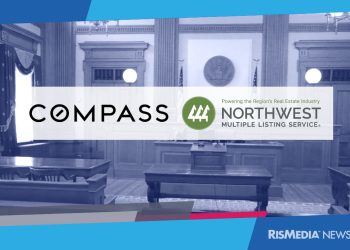By Eve Mitchell
RISMEDIA, August 19, 2008-(MCT)-Faced with a real estate market that has tightened up lending standards at a time when home values are dropping, more people are borrowing money from their 401(k) retirement plans to help swing a down payment to buy a home.
But before you think that borrowing from your employer-sponsored 401(k) retirement plan (or a 403(b) if you work for a school or nonprofit) is the ticket to buying a home, this strategy has both pros and cons.
On the plus side, the loan principal, along with the interest on the loan is paid back to you and is lower (currently in the 6.5% range) than what a bank typically charges. Also, there is no credit check required since you are lending yourself the money
On the negative side, taking out a loan could significantly reduce the retirement account’s long-term growth and earning potential, especially if you stop making contributions while paying off the loan. (That is if you can. Not all plans allow you to make contributions while your loan is active). There is also a tax hit if the loan is not repaid.
Whether you can actually borrow from a 401(k) is up to the plan sponsor, which is your employer. About half of the plans sponsored by the nation’s employers (which collectively reach about 85% of the nation’s 47.2 million 401(k) account holders) allow loans, according to industry statistics. Borrowing is typically capped at $50,000, or up to half of the vested amount, but requires a minimum loan amount of $10,000.
“Borrowing against your 401(k) is a very dumb idea,” said Jim Titus, a vice president and financial consultant in the San Francisco headquarters of financial services firm Charles Schwab & Co. “Number one is the opportunity costs of borrowing. You end up losing the (tax-deferred growth potential) when you take the money out of your 401(k) and the interest you pay back (on the loan) is unlikely to earn as much of a return as your 401(k) investment.” (See breakout for examples.).
That said, there are reasons to consider borrowing from a retirement plan to take advantage of the steep drop in home prices in the wake of the mortgage meltdown sparked by the sub-prime loan crisis that began last year. The meltdown has also made lenders reluctant to provide no-money down loans or piggyback lending, which amounts to two mortgages packaged together to finance a home purchase.
“I’m seeing a lot of people touch upon their retirement accounts for down payment money,” said Dianne Crosby, a senior loan consultant in the Oakland, Calif., office of LaSalle Financial Services, which is both a mortgage banker and mortgage broker. “What’s going on from a lending perspective is that lenders are requiring a much larger down payment than they did a year ago, preferring 20% down, accepting 10% down with mortgage insurance. But prices are coming down on homes. There is a willingness to tap into retirement (funds) … Right now, real estate in a depressed market, I think it’s a great investment.”
One question that people have to ask is whether they would be better off taking out a retirement fund loan now and using it for a down payment or waiting until they accumulate additional funds, said Gary Gardner, a certified financial planner and president of LifeWealth Advisors.
“There are some clear risks of using a 401(k) as a funding source for a down payment on a house. You have to assess those risks and weigh them against the particular economic opportunity you have to buy a home. Under normal circumstances, I think borrowing from a 401(k) to purchase a home is ill-advised. But because of what’s going on in the real estate market, special and exceptional opportunities do arise,” he said. “There are some tremendous values.”
While a 401(k) loan can indeed help provide the down payment on a home, keep in mind that lenders typically treat the money as a form of debt. That could have an impact on your qualifying debt-to-income ratio for the size of the home loan for which you can qualify. The flip side is that using 401(k) money for a down payment could provide the needed equity to avoid paying mortgage insurance.
Retirement fund loans have to be repaid within five years. But there is no set time frame for paying back the loans if they are used to make a down payment on a primary home.
The loans are not subject to ordinary income taxes associated with withdrawals as long as the full amount is repaid. If the loan is not repaid, it is a treated as a distribution subject to ordinary income taxes. A 10% early withdrawal also applies if the account holder is under 59 ½ years.
Given that the stock market has been sliding in recent months, it might be tempting that the interest rate you would pay to yourself on a 401(k) loan could provide a better return than the retirement fund is currently earning.
That’s not a good idea, according to Titus, the Schwab executive.
“In the short term, the interest may outperform the stock market but it is very unlikely that the interest is going to outperform the stock market over the length of the 401(k) investment,” he said.
The loan is also being repaid with post-tax dollars, not the pre-tax dollars used to fund the retirement fund. So if you are in the 28% tax bracket, you are actually paying back $1,280 for every $1,000 borrowed on top of the loan interest, he said. Also, the interest paid on the loan is not tax-deductible.
There are other things to be aware of if you are considering taking out a loan.
If an employee ends up losing his or her job, most loans have to be paid back within 60 to 90 days, said Titus. If the loan is not repaid by that time, then the unpaid loan balance is treated as a distribution subject to income taxes and a possible early withdrawal penalty.
That’s why it’s very important to think about your job security before you take out a loan, advised Gardner and Titus.
“Job security is important, absolutely. What is your contingency plan in the event you become unemployed? How are you going to pay the taxes?” said Gardner.
If a 401(k) loan is used for a down payment, don’t make the mistake of buying a bigger house than your monthly income can handle for a mortgage, he said.
Continue to make regular contributions to your retirement plan provided you can manage both the loan payments and contributions.
“You cannot stop saving toward retirement just because you bought a house,” said Gardner.
However, that may not be possible since some 401(k) plans do not allow employees to make contributions while the loan is active. So check on that before taking out a loan. Even in cases where they do, not many people are able to make both a loan payment and contribution, said Titus.
By not making contributions while the loan is active, you also stand to lose out on the potential for employer contributions, he said.
“You are giving up free money that would come in the form of the (employer matching) contributions, if you are unable to make contributions” Titus said. “My advice if you cannot afford the home without the 401(k) loan, don’t buy the home.”
401k Loan Calculator
Wondering how taking out a 401(k) loan could impact your retirement nest egg? Find out the answer by visiting an online calculator at c.standardandpoors.com/calculators. Choose the “Borrowing From a 401(k) Calculator” link.
Here is an example provided by the calculator for a 35-year old investor who contributes $200 a month to a 401(k) that currently has a $40,000 account balance. The investor takes out $20,000 loan with an interest rate on the loan is 6.5%. The investor plans to repay the loan in five years by making monthly payments of $391. Whether the investor continues to make the same regular contributions to the 401(k) plan while repaying the loan makes a huge difference in the size of the account at age 65. The two amounts are based on the 401(k) account earning an average annual return of eight percent over the next 30 years.
– Not making regular contributions of $200 a month while loan is active: You will have saved $621,241 in your account by the time you retire in 30 years. If you left your retirement plan intact and never borrowed against it, the assets in the account could grow to $737,488, a difference of $116,247.
– Continuing to make regular contributions of $200 a month while loan is active. You will have saved $729,827 in your account by the time you retire in 30 years. If you left your retirement plan intact and never borrowed against it, the assets in the account could grow to $737,488, a difference of $7,661.
Source: Standard & Poor’s
Pros and Cons:
The Pros:
– It’s convenient. There is no credit check or long credit application form. Some plans only require you to make a phone call, while others require a short loan form.
– There is a low interest rate. You pay the rate set by the plan, usually one or two percentage points above the prime rate (which is currently five percent).
– There usually are no restrictions. Most plans allow you to borrow for any reason.
– You are paying the interest to yourself, not to the bank or credit card company.
– The interest is tax-sheltered. You don’t have to pay taxes on the interest until retirement, when you take money out of the plan.
– You choose where the money comes from. The advantage of being able to choose which investment option you will sell in order to obtain the funds for your loan is that you can leave untouched those investments with the best performance.
The Cons:
– There are “opportunity” costs. According to the U.S. General Accounting Office, the interest rate paid on a plan loan is often less than the rate the plan funds would have otherwise earned.
– Smaller contributions. Because you now have a loan payment, you may be tempted to reduce the amount you are contributing to the plan and thus reduce your long-term retirement account balance.
– Loan defaults can be harmful to your financial health. If you quit working or change employers, the loan must be paid back right away. It’s not uncommon for plans to require full repayment of a loan within 60 days of termination of employment. If you can’t repay the loan, it is considered defaulted, and you will be taxed on the outstanding balance, including an early withdrawal penalty if you are not at least age 59 .There may be fees involved.
– Interest on the loan is not tax deductible, even if you borrow to purchase your primary home.
– You have no flexibility in changing the payment terms of your loan.
Source. www.401khelpcenter.com.
WHEN NOT TO DO IT:
It is probably not wise to take out a 401k plan loan when:
_You are planning to leave your job within the next couple of years.
_There is a chance you will lose your job due to a company restructuring.
_You are nearing retirement.
_You can obtain the funds from other sources.
_You can’t continue to make regular contributions to your plan.
_You can’t pay off the loan right away if you are laid off or change jobs.
_You need the loan to meet everyday living expenses.
_You want the money to purchase some luxury item or pay for a vacation.
Source: www.401khelpcenter.com.
© 2008, Contra Costa Times (Walnut Creek, Calif.).
Distributed by McClatchy-Tribune Information Services.










